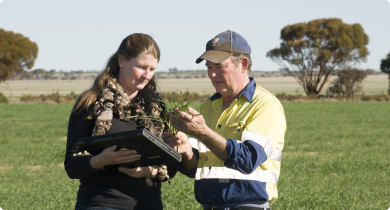Mechanical, physical and cultural
Mechanical, physical and cultural control of pests, weeds and diseases (pests) are an integral part of a successful Integrated Pest Management plan.
Cultural controls are practices that reduce pest establishment, reproduction, dispersal, and survival. For example, crop rotation - replacing a susceptible crop with a less susceptible crop; and changing irrigation practices - less watering can reduce root disease and weeds.
Mechanical and physical controls kill a pest directly or make the environment unsuitable for it. For example, traps - for pest animals and insects; mulches - for weed management; steam sterilisation - for soil disease management; or barriers - such as screens or fences to keep animals and insects out.
The Department of Primary Industries and Regional Development:
- works with landholders and grower/community/biosecurity groups on control
- provides diagnostic services and information on prevention, management and treatment
- provides biosecurity measures to prevent introduction, and to eradicate or manage current pests
For advice on control methods search our website or contact our Pest and Disease Information Service (PaDIS).
Articles
Filter by search
Filter by topic
- Pests (3) Apply Pests filter
- (-) Remove Fungi filter Fungi
- Grains (3) Apply Grains filter
- Diseases (3) Apply Diseases filter
- (-) Remove Nematodes filter Nematodes
- Crops (3) Apply Crops filter
- Viruses & virus-like (2) Apply Viruses & virus-like filter
- Crop diseases (2) Apply Crop diseases filter
- Wheat (2) Apply Wheat filter
- Chemicals (2) Apply Chemicals filter
- Barley (2) Apply Barley filter
- Pest insects (1) Apply Pest insects filter
- Oats (1) Apply Oats filter
- Pulses (1) Apply Pulses filter
- Weeds (1) Apply Weeds filter
- Lupins (1) Apply Lupins filter
- Fungicides (1) Apply Fungicides filter
- Bacteria (1) Apply Bacteria filter
- Canola (1) Apply Canola filter
- Crop weeds (1) Apply Crop weeds filter
- Grains research & development (1) Apply Grains research & development filter



